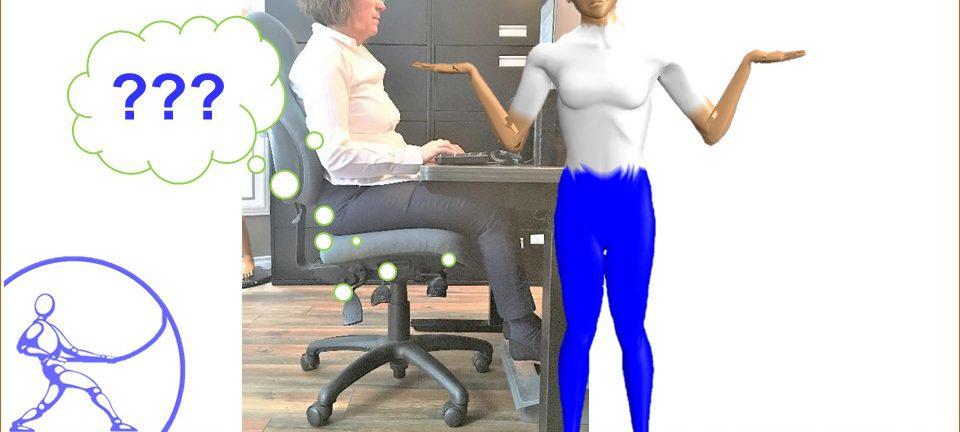At the end of our workshops, our feedback form asks participants to identify the most useful part of the training. A recent Office Ergo participant said she was happy to learn “what all those levers actually do.”
I’m betting that most office workers can identify the lever that raises or lowers the seat. If you work at a “temporary” desk for more than about 5 minutes, you will probably raise or lower the seat pan so that you can type comfortably, or get your feet on the floor. (Or, if you’re really lucky, both!)
But how many people in your office are wondering what all those other levers, paddles, and dials are supposed to do? How many people are sitting uncomfortably, in a really expensive, highly adjustable seat?
Truth be told, new chairs are rarely intuitive. It’s shameful that an “ergonomic” chair could be difficult to use – so “un-ergonomic”! Most ergonomists end up on our knees, crawling around in search of labels, or fiddling with controls to determine how to adjust the seat pan angle, tension, or depth.
For the record, here are the most common chair lever arrangement (for a chair with 3 paddles on the right):
- The biggest paddle, usually in the middle, will be seat height.
- The front lever will be seat angle lock/unlock. This is often thought of as the “eject” button because it flips the back of the seat pan up, and this setting can be difficult to re-set. Sadly, after users hit this lever by accident, they may never want to touch a chair control again. If you’ve seen signs taped to the back of chairs warning people not to touch the adjustment settings, it’s probably because of this paddle. On chairs with only two levers on the right, this one might be on the left. You never know where you might find it. I wish it were red.
- The back lever will probably be backrest angle lock/unlock.
If your seat has a slider, the control is typically under the front edge of the seat. This top-secret setting is incredibly important for long-legged and short-legged employees; it adjusts the depth of the seat pan.
If your backrest height can be adjusted, the control is typically at the bottom of the backrest. New chairs may offer other mechanisms for adjusting the height of the lumbar support.
Armrests often have a button that unlocks the height adjustment and may allow the armrests to rotate or move in and out.
Chairs may also have knobs, dials and other levers that perform specific functions such as adjusting tilt tension. Join us at our Office Ergo training on September 23 to learn how to operate the most complex piece of furniture most of us will ever face, and learn what you’re trying to accomplish by making these adjustments. And of course, we’ll also cover all of the other important aspects of office ergonomics….screen position, laptops, sit/stands, alternative (ball and kneeling) seating, and more.


